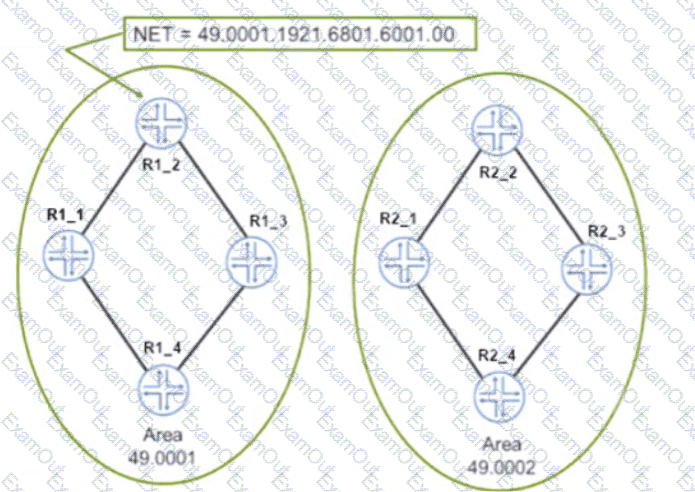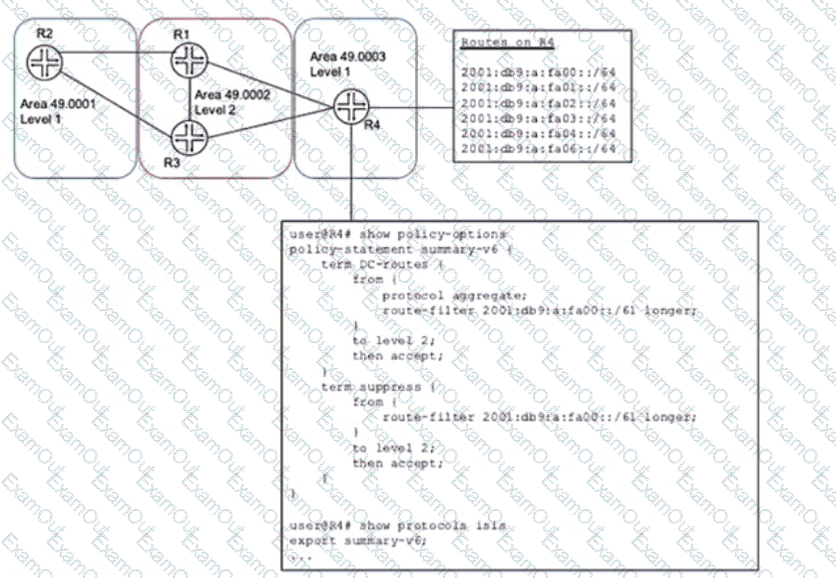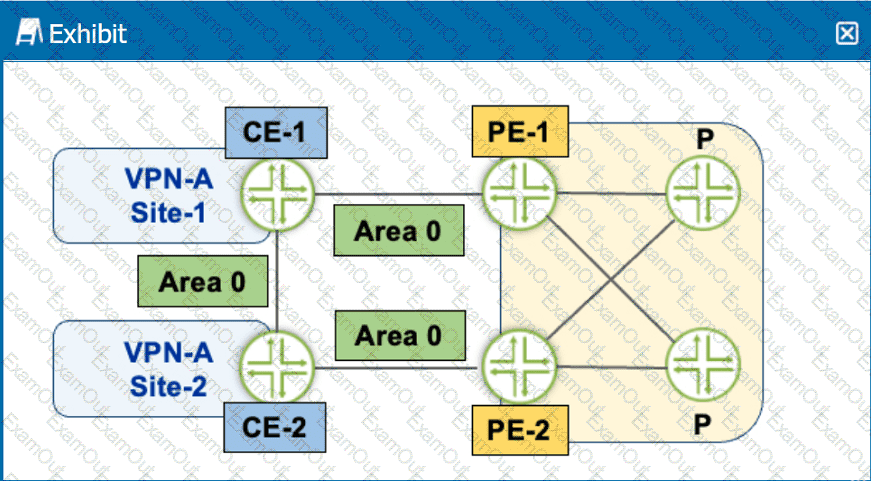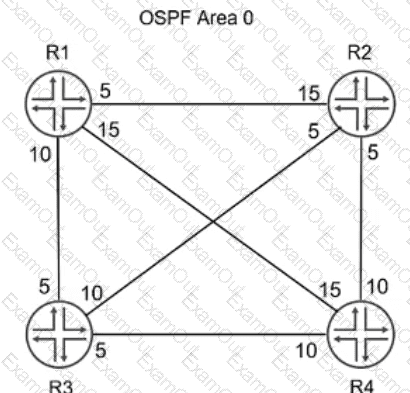You want to ensure that a single-area OSPF network will be loop free.
In this scenario, what are two requirements that satisfy this requirement? (Choose two.)
Exhibit

The network shown in the exhibit is based on IS-IS
Which statement is correct in this scenario?
Refer to the Exhibit:

A network designer would like to advertise a single summary route from R4 to IS-IS level 2 neighbors as shown in the exhibit, but the configuration is not working.
Which three configuration changes will accomplish this task? (Choose three.)
You have an L2VPN connecting two CEs across a provider network that runs OSPF. You have OSPF configured on both CEs.
Which two statements are correct in this scenario? (Choose two.)
Exhibit

You must ensure that the VPN backbone is preferred over the back door intra-area link as long as the VPN is available. Referring to the exhibit, which action will accomplish this task?
Exhibit

R1 and R8 are not receiving each other's routes
Referring to the exhibit, what are three configuration commands that would solve this problem? (Choose three.)

Click the Exhibit button.
Referring to the exhibit, the PE-to-CE protocol being used is OSPF for the L3VPN. Also, there is an OSPF neighborship between CE-1 and CE-2.
Which statement is correct in this situation?
Which two EVPN route types are used to advertise a multihomed Ethernet segment? (Choose two )
Exhibit
user@Rl show configuration interpolated-profile { interpolate {
fill-level [ 50 75 drop—probability [ > }
class-of-service drop-profiles
];
20 60 ];
Which two statements are correct about the class-of-service configuration shown in the exhibit? (Choose two.)
Exhibit.

Referring to the exhibit, which path would traffic passing through R1 take to get to R4?

